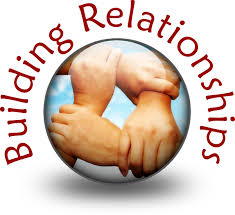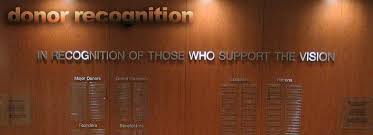 Last week I had the privilege of soliciting someone for an annual campaign pledge over a cup of coffee. In addition to securing their pledge, this was a nice opportunity to catch up because we hadn’t seen each other in a few years. As I neared the bottom of my cup of coffee, this donor reminded me of something important concerning most non-profit organization’s annual campaign efforts and donor loyalty rates.
Last week I had the privilege of soliciting someone for an annual campaign pledge over a cup of coffee. In addition to securing their pledge, this was a nice opportunity to catch up because we hadn’t seen each other in a few years. As I neared the bottom of my cup of coffee, this donor reminded me of something important concerning most non-profit organization’s annual campaign efforts and donor loyalty rates.
People give to people. This is a fundamental resource development principle. So, when a board member or fundraising volunteer moves along to greener pastures, it sometimes means there is no one sitting around the table next year with good enough relationship to feel confident to work their pledge card.
This donor reminded me of a time when I was in the executive director chair and one of the organization’s most prolific annual campaign volunteers stepped aside to focus on challenges dogging his business. I remember taking a phone call from a donor the next year asking what had happened to the volunteer and lamenting about only wanting to sit down with that specific individual.
Your annual campaign will likely experience donor turnover if your fundraising volunteers aren’t actively working at building a relationship beyond the annual solicitation meeting between the donor and your organization.
While there are many good reasons to maintain continuity in asking the same fundraising volunteers to steward the same donors they solicit, the following are a few simple ideas your organization may want to consider to help build stronger and more diverse relationships with annual campaign donors.
Segment your donor list
Identify donors who have been solicited by the same person for more than three years and change your strategy with these individuals. For example, rather than business as usual, ask the fundraising volunteer to bring someone else along with them to the solicitation meeting for introduction purposes.
More robust gift acknowledgement
Your organization’s staff are pulled in many different directions. They are undoubtedly busy! However, I am increasing concerned by how many executive directors and fundraising professionals who don’t seem to personally know the individuals appearing on their donor database reports.
Include in your organization’s individual performance management plans measurable goals focused on calling and meeting in-person with donors after they make their contribution. The focus of those meetings should be:
- acknowledgement
- appreciation and gratitude
- relationship building
- determining a donor’s philanthropic interests
Stewardship
I know that I sound like a broken record because I say it all of the time, but non-profit organizations need to figure out how to go beyond serial solicitation to more meaningful donor engagement. Additionally, it needs to be more than simply a phone call, written thank you cards and newsletters.
Here are a few meaningful stewardship activities that I’ve seen some organizations implement:
- Invite donors to the annual meeting and demonstrate the impact of their contribution via testimonials.
- Ask donors to consider volunteer opportunities.
- Send something unexpected like a box of chocolate covered strawberries at Valentine’s Day. When they call to inquire about why you did such a wonderful thing, take the opportunity to tell them why they are special and how their support is making a difference.
What is your organization doing differently to deepen its relationships with donors? Please scroll down and share your thoughts and experiences in the comment box below.
Here’s to your health!
Erik Anderson
Founder & President, The Healthy Non-Profit LLC
www.thehealthynonprofit.com
erik@thehealthynonprofit.com
http://twitter.com/#!/eanderson847
http://www.facebook.com/eanderson847
http://www.linkedin.com/in/erikanderson847

 I believe that sometimes the universe speaks to you, and over the last two days I’ve been beat over the head with reminders that your non-profit organization’s donor recognition must be meaningful. While there is a time and place for computer generated gift acknowledgement letters and donor gifts, you need to know your donor and appreciate them in a way that speaks to their inner philanthropic soul.
I believe that sometimes the universe speaks to you, and over the last two days I’ve been beat over the head with reminders that your non-profit organization’s donor recognition must be meaningful. While there is a time and place for computer generated gift acknowledgement letters and donor gifts, you need to know your donor and appreciate them in a way that speaks to their inner philanthropic soul. To sum up the results of yesterday’s discussion, the volunteers decided that donor recognition and gifts should be personal, mission-focused and meaningful.
To sum up the results of yesterday’s discussion, the volunteers decided that donor recognition and gifts should be personal, mission-focused and meaningful.